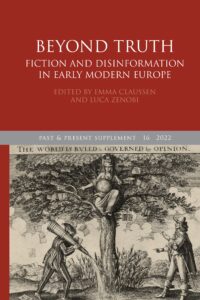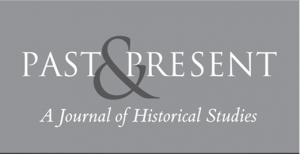by the Past & Present editorial team
Past & Present’s 2022 Supplement (No. 16) Beyond Truth: Fiction and Disinformation in Early Modern Europe, edited by Dr. Emma Claussen and Dr. Luca Zenobi (Cambridge) has been published.
The volume’s abstract is as follows:
“Fake news and fabrications have always both intrigued and alarmed. Over and above this ubiquity, at particular historical junctures, awareness — and wariness — of fakery have reached such prominence in public consciousness as to turn it into a cultural phenomenon in its own right. This was the case in the early modern period when, similarly to today, a combination of new technologies and new audiences (with the rise of novels and newspapers and the exponential expansion of the reading public) brought about various crises of communication as well as opportunities for some of the people who lived through them. The telling of tall tales loomed large, both in terms of sheer quantity and in the level of concern raised about them, sparking new ways of thinking about truth and the literary and critical skills required to identify it.

Front Cover of “Beyond Truth: Fiction and Disinformation in Early Modern Europe”, all rights reserved (2022)
Drawing on a series of papers first presented at a conference in 2018, this Supplement examines fiction, disinformation and the intersections between the two in early modern Europe. The volume brings together literary and historical approaches to these topics, going beyond the novel and the newspaper to look for intersections across a variety of genres: from short stories and legal arguments to biographies and medical reports. Its authors conduct close readings of falsehoods and fictional writings, considering choices of both style and content in light of issues such as creativity, veracity and authenticity. In addition, they highlight how such falsehoods and fictions reveal the agency of readers and writers in reimagining the world around them, by reinforcing existing balances and belief systems or bringing forth new ones. In this sense, the volume is fundamentally a contribution of method, one which showcases a range of interdisciplinary investigations; but it is also a contribution to our understanding of the ideas and exchanges that shaped people’s views and experience of early modern life.”

